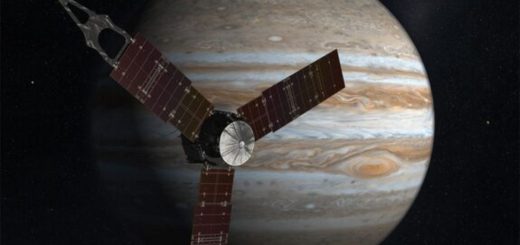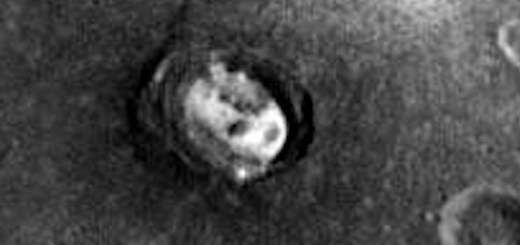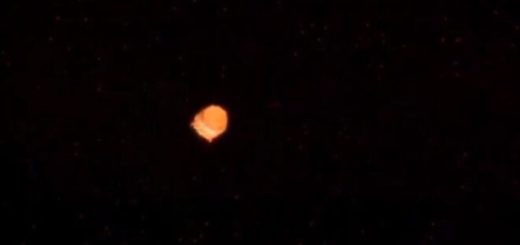Former NASA director: Mars most likely had life once, may have life now

Charles Frank Bolden, Jr, a former Administrator of NASA, the United States Marine Corps Major General, and a former NASA astronaut made surprising comments about the red planet when he served as NASA’s Administrator. In an interview, Bolden said how “…Mars is very Earth like or at least used to be very Earth-like, it is a sister planet to Earth, it is the most likely planet in our solar system that HAD LIFE AT ONE TIME, MAY HAVE LIFE NOW…”
Mars has been the topic of discussion for decades among astronomers and scientists. Thousands of years ago, ancient civilizations across the globe observed the skies and consequently Mars, the reddish star, shining brightly in the night sky. But all of these observations were made with the naked eye. Eventually, in the 1800’s, observatories with powerful telescopes were built around the world and astronomers started exploring space like never before. In 1877, Giovanni Virginio Schiaparelli (1835-1910), the director of the Brera Observatory in Milan who observed the red planet like no one before, began mapping and naming areas on the surface of Mars.
He eventually named the red planet’s “seas” and “continents” (the dark and light areas on the planet) with names from historic and mythological sources. He was the one who saw channels on Mars and decided to call them “canali.” Canali, which means channels, but it was supposedly mistranslated into “canals” which someone misinterpreted and implied Mars had intelligent life on its surface.
Eventually, the news spread, and it was mostly due to the then recent completion of the Suez Canal in 1869—most likely the engineering wonder of the era—that the misinterpretation was taken out of context meaning that large-scale artificial structures had been discovered on the surface of the Red Planet.
However, in 1894, Percival Lowel, a wealthy astronomer from Boston, made his first observations of the red planet from a private observatory he had built in Flagstaff, Arizona—Lowell Observatory.
Lowel decided that the canals on the surface of the red planet were real and he even mapped hundreds of them. Lowell was convinced that the straight lines on Mars were artificial canals built by an intelligent Martian civilization and were used to carry water from the polar caps of the red planet to the equatorial regions. In 1895, Lowell published his first book on Mars, with countless illustrations and, over the next two decades, he published two more popular books advancing his ideas that life existed on Mars.
From here on, the idea that Mars was home to intelligent life developed rapidly.
Lowell’s theories and maps of Mars influenced English writer H.G. Wells, who in 1898 eventually published The War of the Worlds, a science fiction novel where Wells wrote about an invasion of Earth by deadly aliens from Mars—giving birth to an entirely new genre of alien science fiction work.
But modern science has come a long way from then.
In the last couple of years, we have discovered that Mars is one of the most similar planets to Earth ever found. In fact, our neighboring planet was once—billions of years ago—Earth’s twin planet.A
Thanks to the numerous rovers and orbiters studying Mars presently, we’ve managed to discover so much valuable info on the Red Planet that we completely had to rethink everything we thought about Mars.
NASA research suggests that Mars once had a massive ocean containing more water than Earth’s Arctic ocean.
As reported by NASA, around 4.3 billion years ago, the red planet would have contained enough water to cover its entire surface in a liquid layer of approximately 450 feet (137 meters) deep. furthermore, the water would have formed an ocean occupying almost half of Mars’ northern hemisphere, in some regions reaching depths greater than a mile (1.6 kilometers).
This fact was considered ludicrous by many scientists in the past.
But that’s not all. Experts have also found that Mars once had massive rivers, and lakes covering its surface.
Furthermore, experts have found that Mars once also had an atmosphere eerily similar to Earth, and most likely had all the necessary conditions to sustain life as we know it.



 Creators of mankind
Creators of mankind Description of “Tall white aliens”
Description of “Tall white aliens” Where they came from?
Where they came from? About hostile civilizations
About hostile civilizations The war for the Earth
The war for the Earth “Tall white aliens” about eternal life
“Tall white aliens” about eternal life Video: “Nordic aliens”
Video: “Nordic aliens” Aliens
Aliens Alien encounters
Alien encounters The aliens base
The aliens base UFO
UFO Technology UFO
Technology UFO Underground civilization
Underground civilization Ancient alien artifacts
Ancient alien artifacts Military and UFO
Military and UFO Mysteries and hypotheses
Mysteries and hypotheses Scientific facts
Scientific facts


















